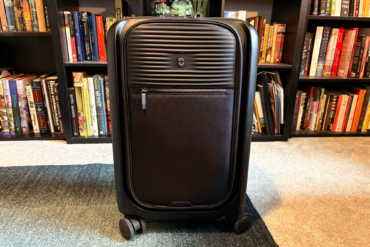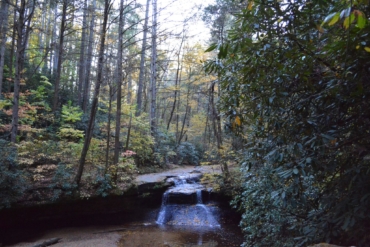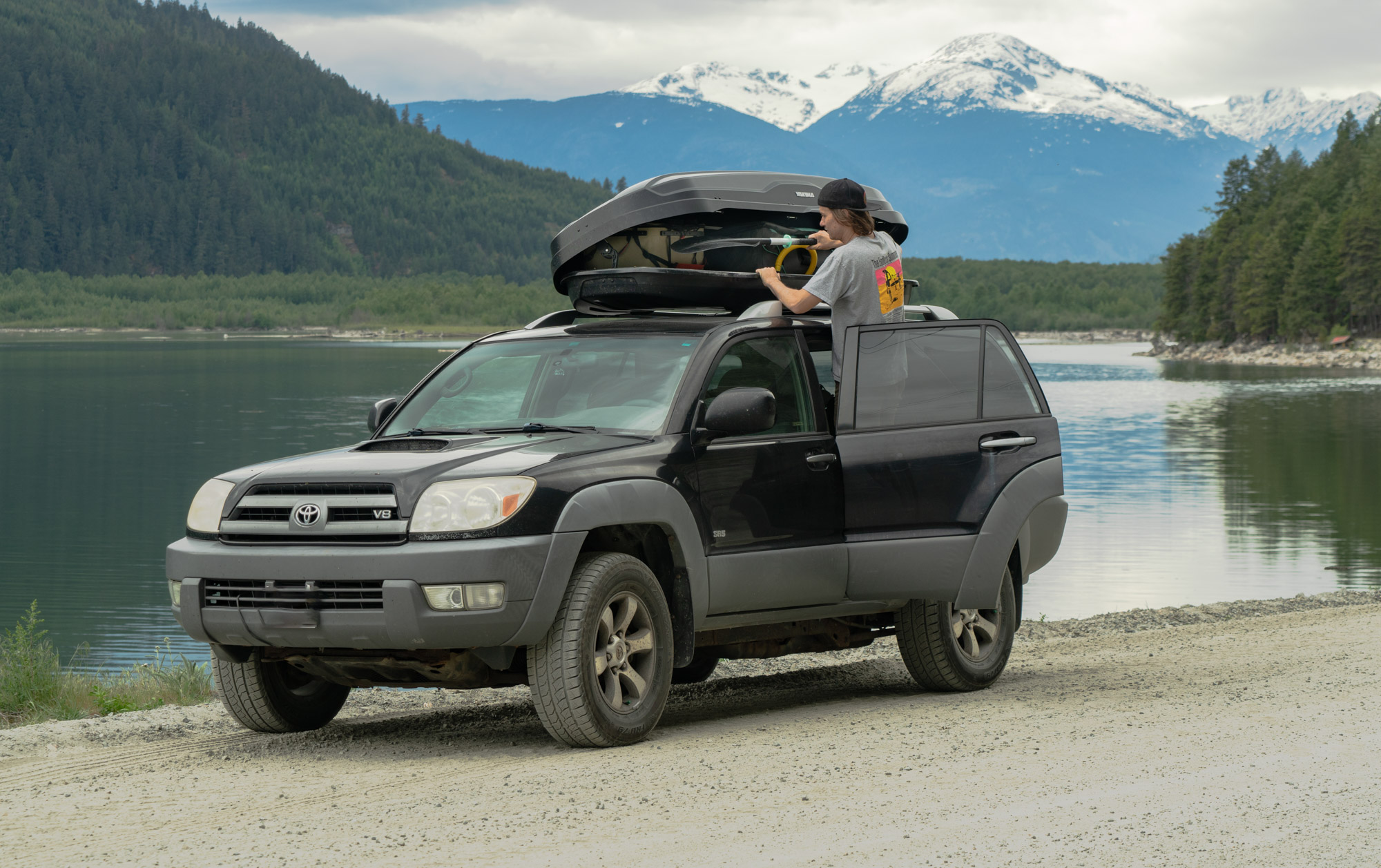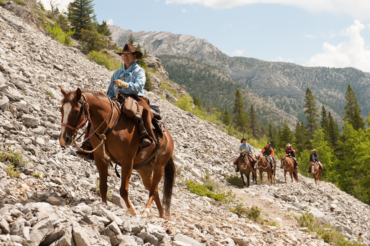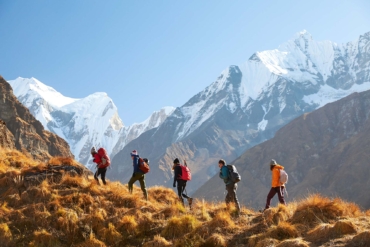Capitol Reef National Park is like Zion National Park before it became popular. There are few crowds and no shuttles, tour buses, or manned entrance stations. With slot canyons, colorful panoramas, arches, and dozens of orchards, the park is a literal oasis in the middle of southern Utah.
Editor’s note: This article is part of our #NationalParksFieldTrip series, written by GearJunkie editor Kyle Nossaman as he and his wife visit national parks during a full year on the road.
After a sweltering two weeks visiting Canyonlands and Arches national parks, each 95-plus degrees without water or shade, Capitol Reef National Park was a welcomed relief. Situated in the Fremont River valley, cooler temps and tall trees abound, especially in the Fruita Historic District. Here, you can find the campground, visitor center, orchards, and a handful of hiking trails.
Though most people just explore the Fruita area and adjoining 8-mile Scenic Drive, the park extends 60 miles from north to south (though is less than 6 miles wide in most places). Via unpaved or high-clearance 4×4 roads, you can access remote corners of the park, visiting canyon after canyon. Our five-day stay wasn’t enough to scratch the surface, and we promptly put this park on our “revisit” list.

Our Preparation for Capitol Reef
Utah’s five national parks are invariably bustling during the summer months. With our visit to Capitol Reef slated for mid-June, we booked our Fruita Campground campsite six months in advance on recreation.gov. It’s the only developed campground in the park and does not have a first-come, first-served loop. So we’d recommend planning ahead and securing your site a few months early.

Our first stop was the park’s only visitor center for trail information and some ideas for our five-day stay. Beyond the general park map, they gave us a detailed map of the various canyons in the more primitive east side of the park.
The Fruita Historic District serves as the central hub of the park and houses a lot of the action. It’s a tiny area full of history (old schoolhouse, tool shed, blacksmith shop), orchards, and popular trails. The areas of the park north and south of Fruita are less developed, accessible by dirt roads, and offer plenty of off-the-beaten-path adventures.
Though a lot of the park is somewhat remote, there’s plenty of adventure to be had without venturing too far from the home base of Fruita.
Capitol Reef National Park: Best Adventures
1. Burro Wash

The east side of the park is littered with canyons to explore. The Burro Wash, 10 miles south on Notom-Bullfrog road, was recommended by rangers at the visitor center, and for good reason. After walking about 2 miles along a sandy wash, canyon walls began to spring up on both sides.
Soon, 100-foot-high walls enveloped us as we slithered through tight spaces in the smooth rock. With three separate, impressive slot canyons en route to an impassable cliff at the 3.4-mile mark, the hike was our favorite in the park. Several rock jams barred the path, requiring some stemming and slithering to get beyond. No technical canyoneering experience was necessary, though.

At some points, the footpath was narrower than our shoes but wide enough at shoulder height for us to shimmy by sideways. Thankfully, we only saw two other groups of people, as passing one another in the slot canyons wouldn’t have been easy. If nontechnical slot canyons are of interest, this one is a must-do.
Bonus: There’s a 150-mile loop drive that continues down the Notom-Bullfrog Road and cuts through part of Grand Staircase-Escalante National Monument and the Dixie and Fishlake national forests. If you do it, be sure to check out the Lower Calf Creek Falls Trail in Grand Staircase-Escalante, near Boulder, Utah. It’s a 6-mile round-trip hike to a colorful and Hawaii-looking waterfall and freshwater pool.

2. Cohab Canyon + Frying Pan Trail + Grand Wash Trail
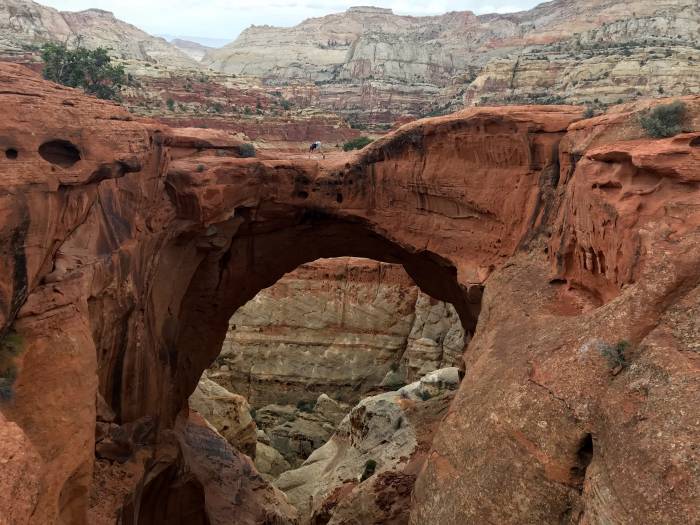
From the Fruita Campground, you can connect these trails and see much that Capitol Reef has to offer. Starting with Cohab Canyon, we made our way up to a few breathtaking lookouts above the Fruita Historic District and the Fremont River. From there, we connected with the Frying Pan Trail for a lengthy ascent along colorful rock formations. At the top, we left the developed part of the park behind and made our way toward Cassidy Arch.
The arch is massive and looks down on the tall walls of Grand Wash. We left the arch, connected with the Grand Wash Trail, and followed it through towering canyon walls until meeting up with highway 24. At that point, we had hiked 10.2 miles. Instead of walking along the highway back to the campground, we opted for hitching a ride.
The road is plenty busy with travelers, and it took less than two minutes to flag down a ride. The man was kind enough to drive us to the picnic area near the campground. If you have two vehicles, you could easily set up your own shuttle.
3. Rim Overlook / Navajo Knobs Trail

The 100-mile Waterpocket Fold is the defining feature of Capitol Reef. It’s a wrinkle in the Earth’s crust, a lifted and tilted barrier of rock running from Thousand Lake Mountain to Lake Powell. The best views of the Fold are found along the Navajo Knobs Trail, which ascends 1,110 feet to Rim Overlook and another 510 feet to Navajo Knobs, where a 360-degree mountaintop panorama awaits.
Before taking on the 4.7-mile one-way ascent to Navajo Knobs, we visited Hickman Bridge (a natural arch), which is accessible from the same parking lot. The 133-foot bridge was worth the short out-and-back hike. Once back on the Rim Overlook / Navajo Knobs Trail, we took in increasingly scenic views along the steady ascent.

We stopped at the Rim Overlook, a great destination if you’re worn out and ready to turn back. We continued up to Navajo Knobs where an even better view awaited, both of the Waterpocket Fold and the Henry Mountains beyond. Back at the parking lot, the Fremont River at the trailhead called our names, and we took a refreshing dip in the cold, rushing waters. Definitely recommended!
4. Fruita Historic District (Gifford Homestead, campground, orchards)

From June through October, the over 3,000 trees in Fruita’s surrounding orchards produce abundant fruit. Among the lot are cherries, apricots, peaches, pears, and apples. The fruit is free to pick, and handheld fruit pickers and ladders are provided to aid in picking. While we were there (June 16-21), cherries were on their way out, and the apricots were ripening. Not a bad post-hike snack!
Near the campground, the historic Gifford Homestead wafts smells of fresh-baked pies, cinnamon rolls, and assorted breads across the grounds. Jellies, salsas, pickled vegetables, and relishes are also for sale, as well as unique handmade items by local artisans like butter churns, quilts, soaps, and toys.
We’d recommend going for a few cinnamon rolls and pies (especially the strawberry-rhubarb). It’s a dangerous place to linger, but we loved being able to grab a few homemade goods while staying in the park.
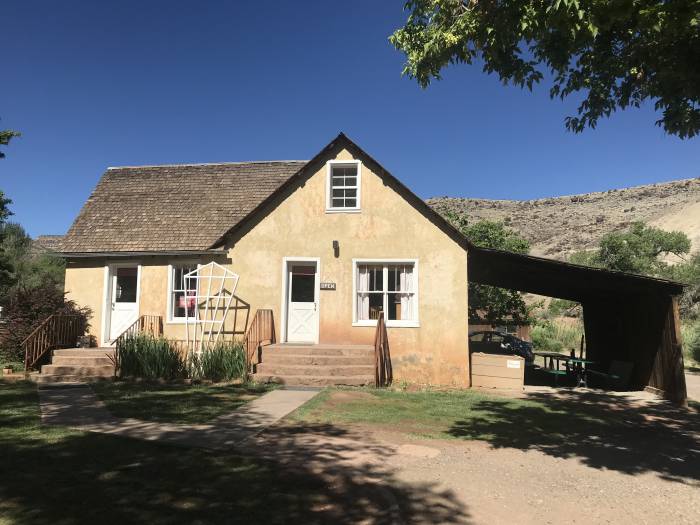
Not all campgrounds are especially peaceful and relaxing, but this one sure was. The Fruita Campground is spacious and surrounded by orchards, the Fremont River, and open fields where large groups of deer congregate. We spent an afternoon in our hammocks, swaying in the breeze and watching the grazing deer.
Tips and Tricks
If your visit to the park is near a new moon, plan to spend some time stargazing. Capitol Reef National Park is an International Dark-Sky park and far from any metropolitan areas that might cause light pollution. Panorama Point is an easily accessible location to post up for your after-hours viewing party.

Many of the park’s trails are along sandy washes, so wear appropriate footwear. We passed a few people who were wearing flip-flops and struggling in the deep sand. Wear supportive shoes and note that hiking in sand is often slow going. Also, the Fremont River runs through a lot of the park. After your hike, jump in to cool off and scrub the sand off your legs.
Go backpacking. Unfortunately, we didn’t have the chance to get into the backcountry, but it’s high on our list for when we go back. Popular spots are the Upper and Lower Muley Twist canyons that extend for miles, with intermittent slot canyons. Backcountry permits are free and can be obtained at the visitor center.
What We Wish We’d Known
The Notom-Bullfrog Road, after the initial 14-mile paved section, is a long, washboard, sandy, unpaved road. We took it down to the Burr Trail Road intersection atop a 125-cc Honda Grom motorcycle. It took us nearly two hours to complete the 20 miles of dirt road. Though we survived, it was quite uncomfortable. The canyons along the way are spectacular, but be warned about the condition of the road. You could make it in a two-wheel-drive vehicle, but it’ll be a bumpy ride.
The park doesn’t seem huge, but it is. The main trail map mostly shows trails in the Fruita area, but there are countless hike-able canyons all throughout the park. Don’t skip through this park on the way to Arches or Zion — spend as many days here as you can. Our five-day stay left us wanting more.
We wish we’d known just how fast our Gifford Homestead pickled corn relish would run out! We scarfed it down with chips, cucumbers, and salmon in a couple of days. Next time, we’re stocking up on the stuff.

Capitol Reef National Park is Utah’s least-visited national park. That’s preposterous, but we’re not complaining. It’s an oasis with untouched beauty and few crowds. Get out there before the tour buses start to.

